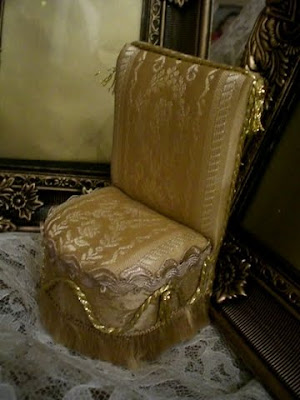El otomán, también conocido como escabel, taburete o reposapiés, es una pieza de mobiliario que acompaña a cualquier sillón o sofá y que está especialmente diseñada para ofrecer comodidad a quien se sienta.
La historia de este versátil mueble refleja que fue una pieza muy popular durante las grandes monarquías europeas desde el Renacimiento hasta nuestros días.
Se trata de una especie de tarima pequeña, que carece de apoyabrazos y respaldo, casi siempre acolchada. “El otomán se utilizaba también al lado de la cama y fue muy popular en las cortes reales, delante de los asientos de príncipes y reyes” El curioso nombre procede del vocablo francés “ottomane”.
En Inglés el mueble se conoce como “ottoman” y se piensa que el nombre viene asociado a la cultura turca, por su uso con asientos de posición reclinada. Es muy posible que los franceses copiaran este mueble al invadir Egipto en el siglo XVIII, cuando formaba parte del Imperio otomano. Ya en Europa estos muebles -pequeños, pero útiles- se hicieron populares y fue entonces cuando se les dio su nombre, en homenaje a sus orígenes. Además del mueble, se conoce como otomán “ a una tela cuyo tejido forma cordones muy perceptibles, ya que los hilos de la urdimbre son más gruesos que los de la trama. Se utiliza para vestidos, tapicería y otros.”
The ottoman, also known as a footstool, stool or footrest, is a piece of furniture that comes with any chair or sofa and is specially designed to offer comfort to those who feel.
The history of this versatile furniture piece reflects that it was a very popular during the great European monarchies from the Renaissance to our days.
It is a sort of small platform, lacking armrests and back, usually padded. "The ottoman is also used beside the bed and was very popular in the royal courts, in front of the seats of princes and kings" The curious name comes from the French word "Ottomane.
In English the cabinet is known as "ottoman" and it is thought that the name is associated with Turkish culture, for use with reclining seats. It is quite possible that the French copied this furniture to invade Egypt in the eighteenth century, when it was part of the Ottoman Empire.
Already in Europe this furniture, small but useful "became popular and that was when they gave his name as a tribute to its origins. In addition to furniture, ottoman called "a material whose tissue is very visible strings, as the warp threads are thicker than the plot. It is used for clothing, upholstery and other
La historia de este Otoman
Tengo una tela que me parece especialmente bella, pues es de seda color negra y dorada con estampado oriental y pensé en utilizarla para realizar un otoman.
Cómo no estaba muy segura de la consecución que podía obtener y no quería estropear la tela, busqué por casa y encontré ésta otra tela de damasco, así que echándole valor me puse a trabajar y esto es lo que ha salido: un otomán y un pequeño sillón. Ambos están realizados en madera y posteriormente tapizados.
El resultado final no están todo lo bien que yo quisiera, pero para ser la primera vez me doy por satisfecha, así ahora ya sé qué debo hacer y qué no debo de hacer y así pues, el próximo que realice espero que me salga mejor.
The history of the Ottoman
I have a fabric that strikes me as particularly beautiful, because it is black and gold silk with oriental pattern and thought to use it for an ottoman.
How I was not sure I could get the achievement and did not want to spoil the material, looked for another house and found this damask fabric, so I started giving him courage to work and this is what has emerged: an ottoman and a small chair. Both are made of wood and then upholstered.
The end result are not doing as well as I wanted, but for the first time I am quite satisfied, so now I know what to do and what not and I do so, the next they do I hope it better.



8 comentarios:
Your chair and ottoman are fabulous, you have done so well with the upholstery it looks very professional.
Que maravilla!, es fantastico, una verdadera preciosidad, felicidades
precioso carmen, ya estoy deseando de ver el negro y dorado un besote.
pues a mi me ha gustado muchísimo el resultado, ha quedado elegantísimo, así que atrévete con el de tela negra y dorada que te va a quedar genial...besos
Pues aparte e que la explicación, me encanta. Chica, te ha quedado precioso, muy elegante, bueno como todo lo que haces.
tocaya, genial.
Besitos tu tocaya.
Ha!, y el de tela negra ahora chupado, quiero verloooo.
Wow!! The fabric is perfect, and your upholstery skill also :)
Porque lo dices tu pero en las fotos se ven geniales, y la tela que as escogido no esta nada mal tampoco.
un abrazo
Carmen, I think your ottoman is really authentic! This damask fabric is very suitable for the opulence of Louis XIV! I have always thought "ottoman" came from the Turkish language because of "Ottoman Empire" ..lol. Also an ottoman which is really a big cushion shaped like a stool is very typical of the Ottomans who uses many pillows :)
Publicar un comentario